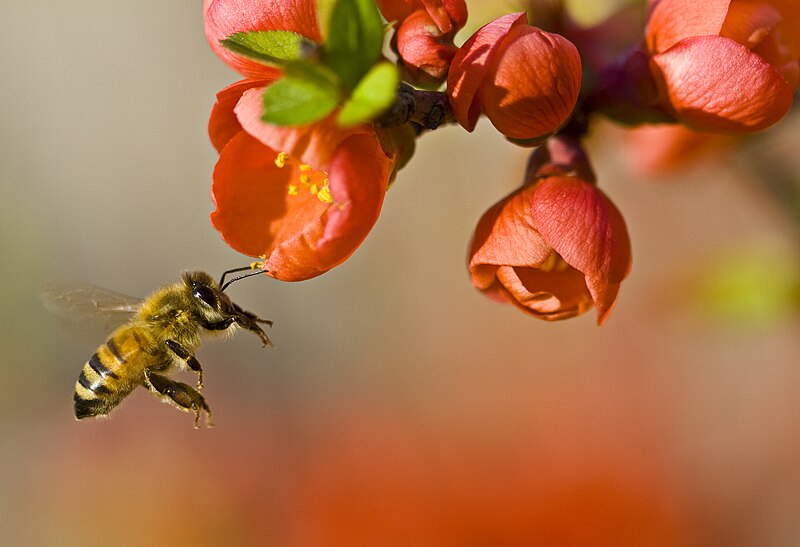Elina Manninen
For the past few years in many
countries, bees, specifically honey bees have been disappearing. Honey bees are native to Europe and other
parts of the world, and were brought in to the US originally in the 17th
century to produce honey. Since then
they have been bred especially for agricultural purposes; in Europe alone, honey
bees contribute over € 22 billion annually to agriculture by pollinating plants
such as broccoli, apples, nuts, blueberries, cucumbers and many other crops
important to our diet. Losing honey bees could therefore have catastrophic effects
on the human race. Already in 2006, beekeepers and researchers in the US
started to notice that worker bees were disappearing from their hives, leaving
the queen and the young ones behind. Without the worker bees, the hives cannot
sustain themselves and will die out. This event is called Colony Collapse
Disorder. Researchers are currently studying what could make the worker bees
disappear from the hives. One possibility is that different parasites, pests or
diseases are drastically decreasing the bee numbers. Also pesticide poisoning,
and habitat and nutrition loss are believed to be partly at fault in this case.
 |
Wikimedia/Public Domain
|
Last year, the EU discussed banning
a group of insecticides that have been linked to bee disappearance. These
pesticides are called neonicotinoids. They are a relatively new type of insecticide and widely used all over
the world. Unfortunately, their full effect on bees and other pollinators is
still unknown. The problem with these pesticides is that they don’t just stay
on the surface of the plant but travel through the tissue of the plant to the
roots, leaves and even flowers. From the flower these pesticides could be
transferred to the bees. What do the pesticides then do to the bees? It is
possible that they could lower their immune level and allow parasites and diseases
to spread more easily, but at the moment we don’t quite know the effects.
Human actions might carry a bigger weight than that of neonicotinoids. The combined effects of using many pesticides
and insecticides, cutting down forests, destroying natural habitats and nesting
areas thus removing natural sources of natural food such as flowers for the
pollinators, could all be reasons why the bee populations are disappearing. We
won’t know the exact problem unless we study all the possible factors
carefully.
It has also been suggested that we might have bred bee populations that
are more vulnerable to change and diseases. Losing honey bees could have
catastrophic consequences and we could lose at least, if not more than, half of the food available now. Of course, other pollinators such as native bees in the US,
bumble bees, moths and others could eventually take over. The problem is that
we currently rely on honey bees to pollinate and hence other pollinators have
been more or less forgotten. I do think
it would be a challenge, at least in the short term, to sustain the amount of
people currently living on this earth if we were to suddenly lose all of our
honey bees.
No comments:
Post a Comment